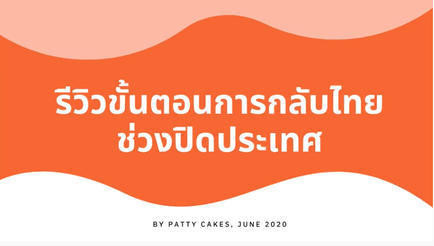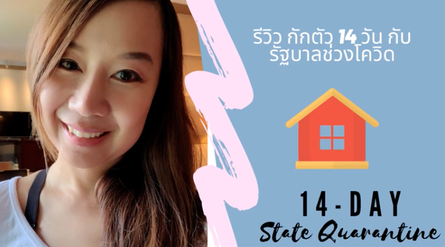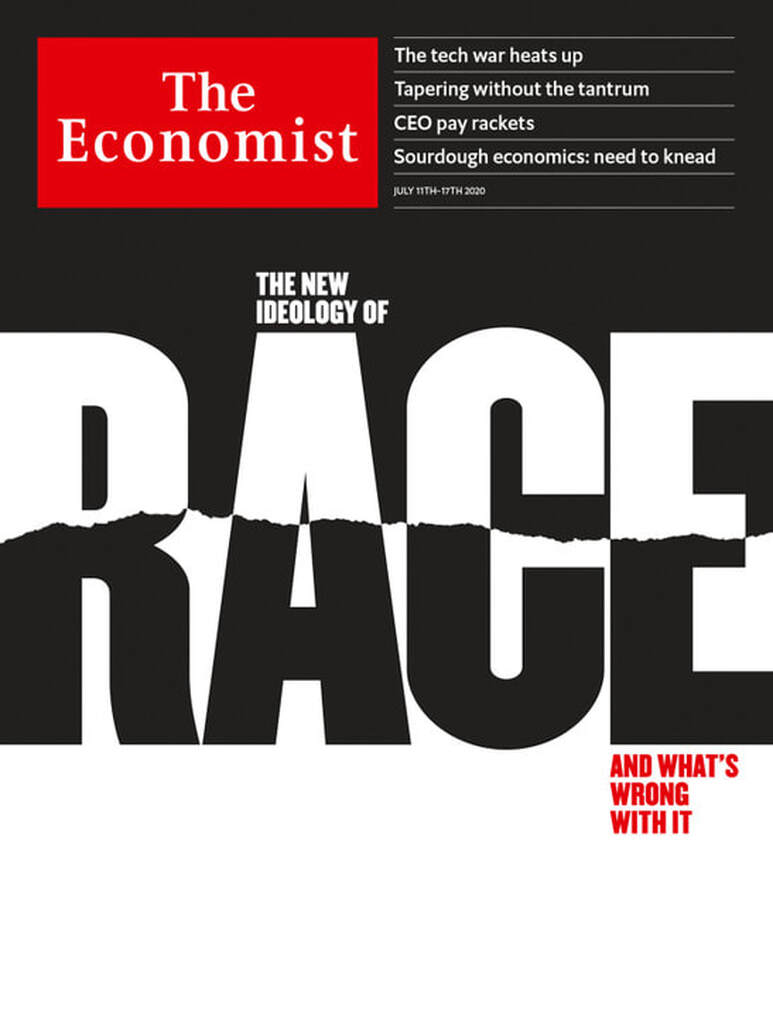A video summary by Fai-Napasanun Chatchayaladasiri
การเดินทางกลับประเทศไทยของคนไทยที่อยู่อเมริกา
วิดีโอย่อ โดย คุณฝ้าย-นภัสนันท์ ฉัตรชยาลดาศิริ
การเดินทางกลับประเทศไทยของคนไทยที่อยู่อเมริกา
วิดีโอย่อ โดย คุณฝ้าย-นภัสนันท์ ฉัตรชยาลดาศิริ
|
Vertical Divider
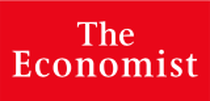
Why has the pandemic spared the Buddhist parts of South-East Asia?
Cambodia, Laos, Myanmar, Thailand and Vietnam have had only tiny outbreaks Asia Edition / 11 July 2020 Banyan Below is a reproduction of the article. For original version, please see:
▶️ THE ECONOMIST 
One of the bigger riddles of the global pandemic lies in South-East Asia. Despite being close to the source of covid-19, in China, and to one of the current hotspots of the outbreak, India, the partly or largely Buddhist countries of Cambodia, Laos, Myanmar, Thailand and Vietnam have scarcely sneezed.
Vietnam is the standout: with 97m people, it claims no deaths from covid-19. Thailand, with 70m, has seen just 58 fatalities and no local transmission in over 40 days. Impoverished Myanmar claims just six deaths from 317 cases, while Cambodia (141 confirmed cases) and tiny Laos (19 cases) also have no deaths apiece and no local transmission since April. Compare that with the nearby archipelagic nations of Indonesia (some 68,100 cases and 3,400 deaths) and the Philippines (50,400 cases and 1,300 deaths), where the pandemic still rages. Set aside karmic grace as an explanation, especially given that Vietnam’s communist dictatorship is atheist. Vietnam’s success, indeed, is easiest to explain. The country has a suspicion of its big northern neighbour, China, rooted in millennia of historical interaction. At the start of the year it instinctively distrusted China’s reassurances about the disease and even launched cyber-attacks to get better information on the epidemic’s course. It closed its border and used authoritarian powers to lock down the population and trace and isolate cases. That, in essence, is what China’s communist authorities were also doing. Few governments have both the overweening power and effective health systems needed to emulate China and Vietnam, but Thailand, a sham democracy overseen by generals, perhaps comes closest. The quality of its health care makes Thailand a popular destination for medical tourism. Moreover, the government was quick to set up a vigorous covid-fighting task-force. Thailand’s success comes despite close ties with China. Plenty of people-to-people exchanges might have been expected to spread infection. But that has not happened in Laos, which is too small to resist China’s blandishments, Myanmar, which is awash with Chinese traders and smugglers, or Cambodia, whose strongman, Hun Sen, is the region’s biggest cheerleader for China. Chinese construction is reshaping these countries, which all came under pressure not to close borders with China even as the pandemic spread. Mr Hun Sen pointedly travelled to Beijing in February, at the height of the Chinese epidemic. Thailand was welcoming Chinese visitors well into March. Myanmar’s border with China is extremely porous. Why did visitors from China not seed more South-East Asian outbreaks? One widespread suspicion is that they did, but these were not reported. Testing is severely limited in Cambodia, Laos and Myanmar. Yet, says Frank Smithuis of Medical Action Myanmar, a charity with several clinics around the country, if there had been large-scale transmission, his organisation would have noticed. It is not possible, he says, to hide a covid-19 outbreak—especially in Myanmar, the world’s “gossip country number one”. Experts in Cambodia, Thailand and Vietnam see no evidence of widespread transmission, such as people showing up at hospitals. Even the poorest countries adopted measures that must have helped check the spread of the coronavirus. Thitinan Pongsudhirak of Chulalongkorn University in Bangkok reports that migrant workers returning from Thailand to their villages in Myanmar often had to quarantine for 14 days in a shack outside their village. Other factors that may have helped, say health experts, include high numbers of people living in the countryside rather than in crowded cities; people more likely to live with fans and open windows than air-conditioning; the relative youth of the region; and a pre-existing proclivity for masks. There may be a religious element, too. The wai, a Buddhist greeting of palms pressed together, helps with social distancing. The question now is whether South-East Asia’s Buddhist successes can weather second or third waves. Perhaps, Mr Thitinan suggests, low transmission from China was not the miracle some divine—the giant neighbour, after all, quickly got on top of its epidemic. Now, transmission routes are changing. Across Asia, infections are being imported from all round the world, seeding local transmission, most recently in Hong Kong. The crowds this week in South-East Asian temples celebrating the start of Buddhist lent are a reminder of how easy it is to let covid guards fall. This article appeared in the Asia section of the print edition under the headline "Wai-five" ▶️ THE ECONOMIST ▶️ THAILAND COVID-19 |
Vertical Divider
A NOTE FROM THIS SUBSCRIBER
The Economist (11 July 2020), attempted to figure out the reason why Thailand, Cambodia, Laos, Myanmar, and Vietnam had surprisingly succeeded in fighting off the COVID-19 pandemic. The number of infected cases and fatality rates have been extraordinarily low in these countries. It could have been because of degrees of authoritarianism in their systems of government which may have effectively helped push the population in the direction desired to contain the virus. Or it could have also been the Buddhist way of life which helps contribute to a healthier lifestyle, together with more open-space living in rural communities. Only small number of people in Thailand live in flats or apartments where they would be cooped up between four walls. The Economist, however, did not have much to say about the Buddhist factor other than giving it an enticing headline and a mentioning of a Thai word 'Wai', a Thai (as well as Hindu) greeting with two enclosed palms, thus avoiding the western-style physical handshake. (It could not be called ‘Wai-five’ as suggested by The Economist since it uses two hands - ten fingers. A ‘Wai-ten’ will be fashionable either. A plain ‘Wai’ would be just fine.) The focus is more on various governments' effective measures and the population's willingness to comply with government directives. Their proximities to China, in terms of physical borders and flow of tourists, somehow keep the countries well informed and better prepared. As for Thailand, in spite of a 'sham democracy overseen by generals', The Economist attributes Thailand's success to 'the quality of its health care' that 'makes Thailand a popular destination for medical tourism', and that the Thai 'government was quick to set up a vigorous covid-fighting task-force'. It's nice to hear good news about Thailand from The Economist once in a while. I'm sure those generals will be happy to allow the circulation of this current issue of The Economist in their 'sham democracy'. By the way, The Economist Intelligence Unit categorizes Thailand in 2019 as a 'flawed democracy'. Now in 2020 it probably is downgraded to a 'flawed democracy in shamble'. It's OK with me, as long as I get my weekly printed copy of The Economist on time! Somkiat Onwimon Pak Chong 12 July 2020 |
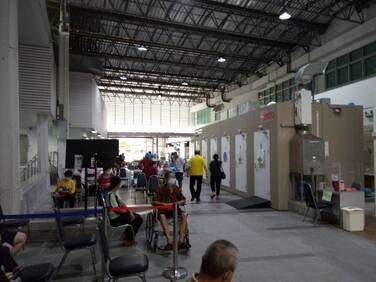
A VISIT TO A HOSPITAL IN BANGKOKIN THE ERA OF COVID-19
I am 72, a regular visitor at Ramathibodi Hospital in Bangkok. As a two-year bladder cancer survivor with a few other health issues common to an elderly person I find my hospital visit a norm of life. That is until the arrival of the Novel Corona Virus Diseases in 2019. I have happily retired from a long, exciting, active, and fulfilling public life as a political scientist, television journalist, documentary producer, a drafter of the 1997 constitution, and a one-term senator. During the two years following my bladder cancer operation in 2018 I am required to undergo update check-ups every 3 to 4 months. These involve blood and urine tests, ultrasound, x-ray, and cystoscopy. I also have prostatitis which requires regular administration of a drug called Uroflo. My hernia inflammation now needs an operation. Not to be outdone, in 2015 I met with a deadly car accident where I came out with all kinds of broken bones and one full year of convalescence. All these medical issues combined make my visit to the hospital in the era of COVID-19 all the more challenging.
▶️ FULL STORY
I am 72, a regular visitor at Ramathibodi Hospital in Bangkok. As a two-year bladder cancer survivor with a few other health issues common to an elderly person I find my hospital visit a norm of life. That is until the arrival of the Novel Corona Virus Diseases in 2019. I have happily retired from a long, exciting, active, and fulfilling public life as a political scientist, television journalist, documentary producer, a drafter of the 1997 constitution, and a one-term senator. During the two years following my bladder cancer operation in 2018 I am required to undergo update check-ups every 3 to 4 months. These involve blood and urine tests, ultrasound, x-ray, and cystoscopy. I also have prostatitis which requires regular administration of a drug called Uroflo. My hernia inflammation now needs an operation. Not to be outdone, in 2015 I met with a deadly car accident where I came out with all kinds of broken bones and one full year of convalescence. All these medical issues combined make my visit to the hospital in the era of COVID-19 all the more challenging.
▶️ FULL STORY

